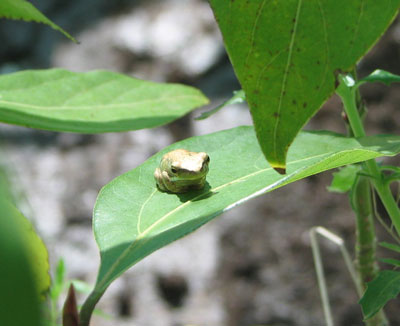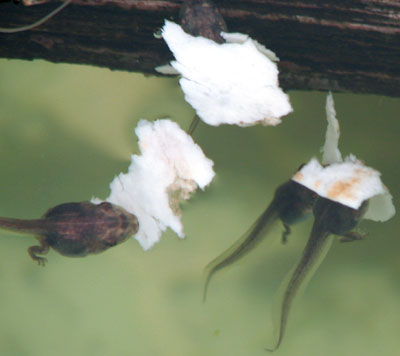On the far North Queensland coast, evidence of Cyclone Yasi damage abounds, seven years later. On Dunk Island, the once-famous resort is still closed, unrepaired.

But even here natural survivors struggle on, like this coconut palm.
Years ago I had read Banfield’s Confessions of a Beachcomber about his time there. But Dunk Island is not the romantic and untouched place he described, full of wildlife.

I struggled to see any, and I’m afraid that the one frog briefly spotted on the climb to the top of the mountain may well be a cane toad. It was extremely well camouflaged and doesn’t fit any in my frog book.
There was no flora or fauna information on the Island, even though much of it still a national park, and walking tracks were vague.

The rocks are spectacularly jagged and slanted, thrusting up in sharp slabs from beneath the gritty sand of finely crushed coral. Shellfish cluster round their high tide bases.

Even well above any tide line, wasps find shelter in their hollows…

… and tiny tree seedlings root in any crevices where soil or rotting vegetation have lodged.
Beautiful as it is, I found Dunk to be a sad place, damaged by more than Yasi.
The coast is close here, a quick water taxi ride away.
It’s famous for its Cassowaries and crocodiles, but I saw neither. My most interesting northern sighting was of an Orange-footed Scrubfowl.

Not exclusive to the north, but not often seen by me, was what I think was a Spangled Drongo.

Inland, the mountains back the sugarcane coastal plains, trapping clouds and dropping rain, so that towns like Tully and Babinda vie for the title of the wettest town. (Babinda’s main street happens to be Munro Street!)

The edging range creates plentiful waterfalls and powerful rushing creeks, as at Babinda Rocks.
Wild, lushly grand country.







